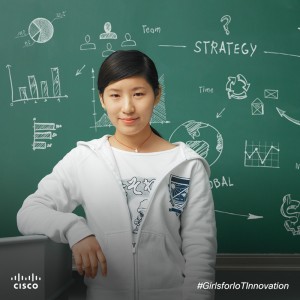We need to create more effective mechanisms for attracting and engaging a diverse group of students in technology. In my work as an educator and collaborator with leading companies in a variety of industries, I have noticed a trend: that including women, minorities, and those pursuing non-STEM disciplines in Internet of Things (IoT) technology-related learning is a critical issue that needs to be addressed to yield the greatest benefit from IoT. I am personally very passionate about this topic.
 When we launched the University of Wisconsin-Madison, our Internet of Things (IoT) Lab in February 2014, one of our primary objectives was to provide students unique interdisciplinary learning and innovation experiences with IoT technologies. The IoT Lab is not associated with any course – the students who are participating in the IoT Lab are doing so because they are intrigued by and excited about IoT technologies and potential applications. This hub also serves as a campus technology sand-box and innovation community where students from diverse disciplines come together and engage in fun, social, collaborative learning and hands-on experimentation.
When we launched the University of Wisconsin-Madison, our Internet of Things (IoT) Lab in February 2014, one of our primary objectives was to provide students unique interdisciplinary learning and innovation experiences with IoT technologies. The IoT Lab is not associated with any course – the students who are participating in the IoT Lab are doing so because they are intrigued by and excited about IoT technologies and potential applications. This hub also serves as a campus technology sand-box and innovation community where students from diverse disciplines come together and engage in fun, social, collaborative learning and hands-on experimentation.
The IoT Lab has adopted a novel approach for successfully engaging students. It has fostered participation by dozens of undergraduate and graduate students (a large fraction being women) representing a range of disciplines including not only engineering and computer science, but also other “non-technical” disciplines such as business, human ecology (retailing and consumer sciences), nursing, economics, journalism and mass communications, mathematics, physics, statistics, and philosophy.
There are several key insights that we have gained through our experience in engaging students with IoT. Here are two:
(a) Students from non-technical disciplines can be a great source of innovative ideas for IoT projects. In contrast to engineering and computer science students whose approach sometimes tends to be along the lines of “a technological hammer looking for a nail” (e.g., What can I do with an Arduino kit?) the students from other disciplines are motivated by and have a deeper understanding of real challenges and pain-points in society and business that can serve as a fertile basis for ideation of IoT projects (e.g., How can we improve diagnosis of and response to sports-related concussions?). Further, this confluence of diverse perspectives leads to a more holistic consideration of IoT, ranging from technological issues to privacy/ethical issues. So, bringing together technical and non-technical students for co-creation and development with IoT is a potent formula.
(b) Bringing together students from diverse technical disciplines creates valuable synergy. The nature of IoT projects often requires a body of knowledge (e.g., sensing, communication, controls, software development, data analytics, user-experience design) that goes beyond individual engineering disciplines (such as electrical engineering, mechanical engineering, manufacturing engineering, biomedical engineering, industrial and systems engineering, and computer engineering). Hence, bringing together students from these diverse technical disciplines enables them to learn from each other, and to jointly develop solutions to address challenges that lie at the intersection of these disciplines.
The universal appeal of IoT seems to encourage inter-disciplinary collaboration and problem solving, whether within engineering or across different specialties. This is where the diverse perspectives of the participants will become increasingly important as IoT becomes a way to provide solutions.
Next Steps: The level of student interest in participating in the IoT Lab is high and growing, but we have had to restrict participation to around 40 students (~ 16 projects) in each semester during 2014 while we develop the longer-term strategic roadmap and sustainable resource model to scale our efforts. In December, we hosted an IoT Lab Open House event that attracted more than 500 attendees to view the exciting design projects and demonstrations that the students developed this semester.
This university scenario is one part of the equation – it is critical that diverse participation be addressed through university-industry collaboration by combining efforts on solving common challenges and sharing knowledge. Plans are underway to enable the University of Wisconsin-Madison IoT Lab to serve as a center of excellence for research, learning and knowledge, as well as technology transfer that is accessible to industry and other universities.
I was a theoretical math major so experienced early on what it was like not to have much diversity. I spend part of my day helping Cisco expand our inclusion and diversity. I really appreciate how clearly you outline the issues at hand and why diverse perspectives can help.